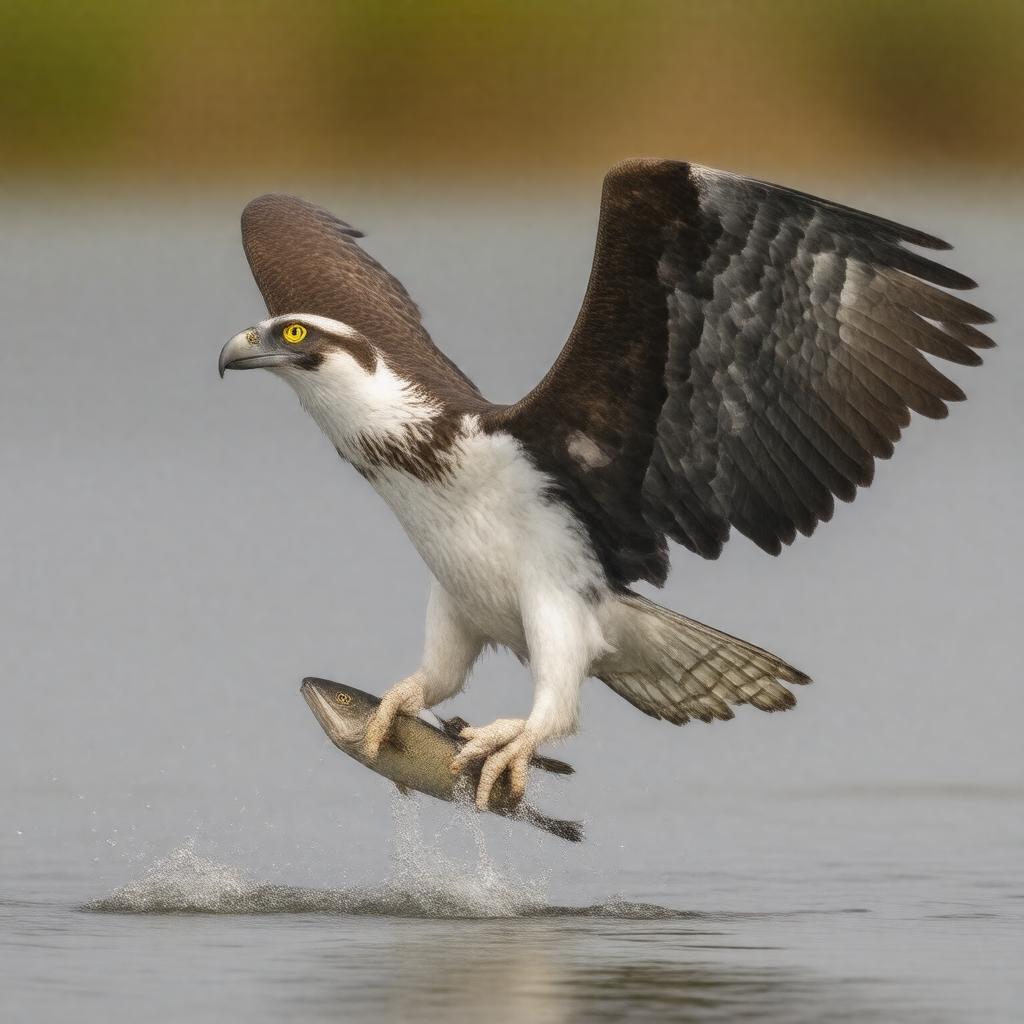Prompt
"Generate an image of a Pandion haliaetus, also known as an osprey, in its natural habitat near a water body, with a fish in its talons, showcasing its dense plumage, sharp talons, and reversible outer toe. The bird should be depicted in a realistic style with brown upperparts and white underparts, yellow eyes, and a black beak, with a wingspan of approximately 1.5 to 1.8 meters. The osprey should be shown in a dynamic pose, with its wings spread wide, conveying a sense of power and agility, as if it has just dived feet-first into the water to catch its prey."

